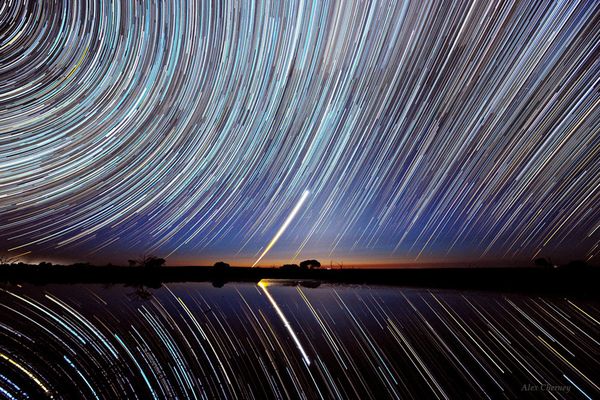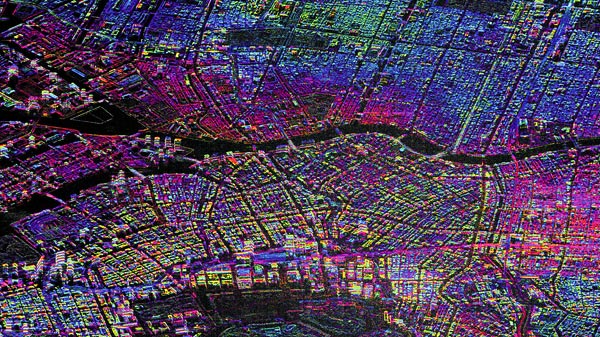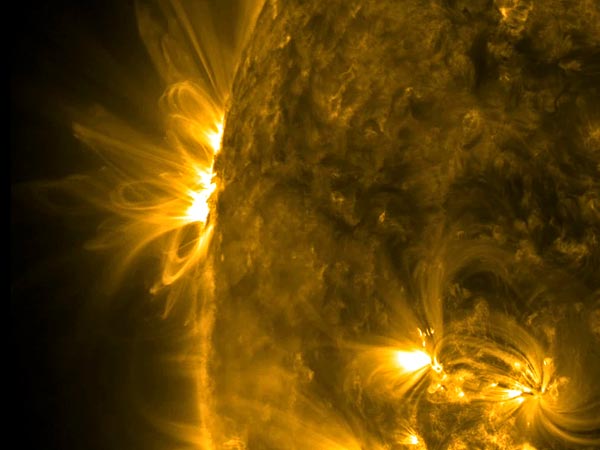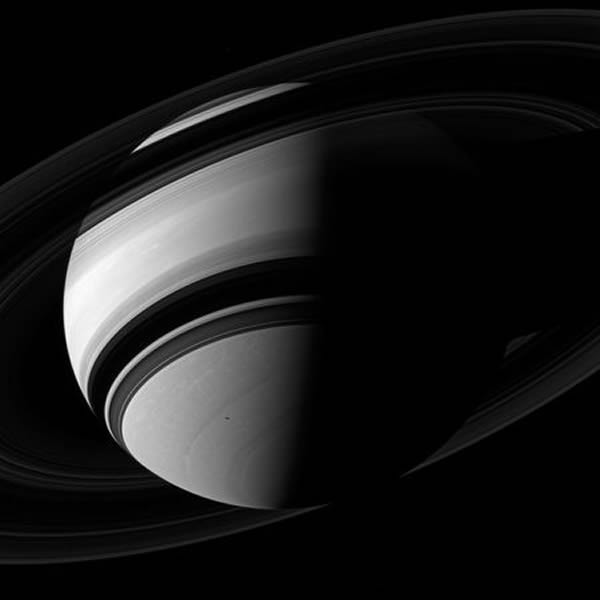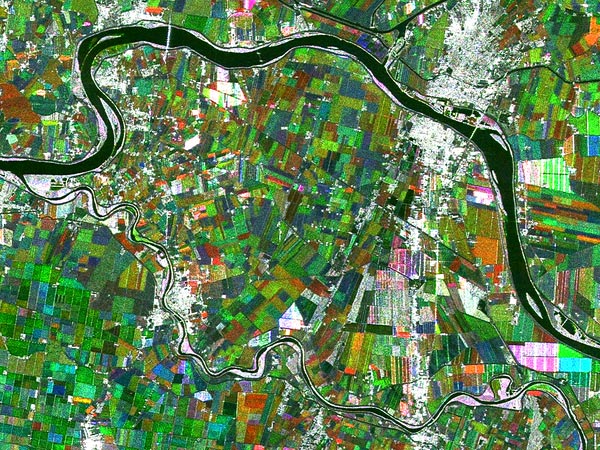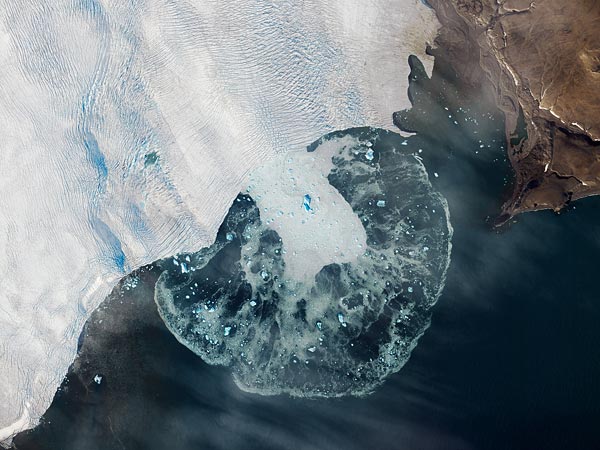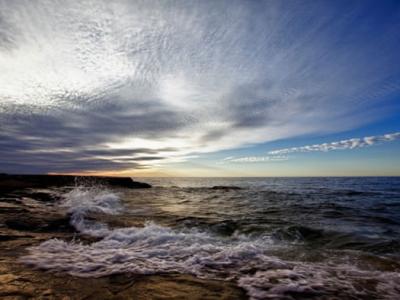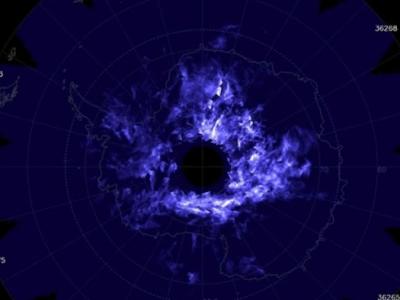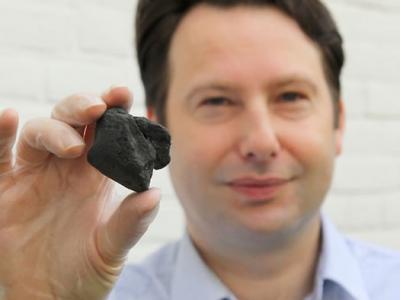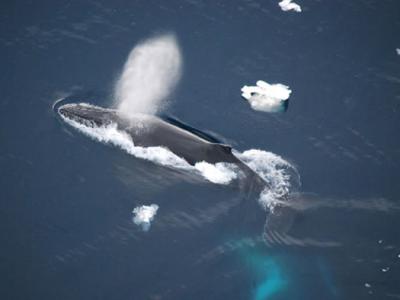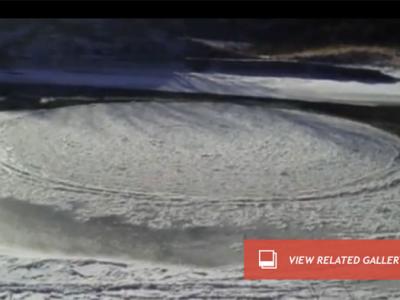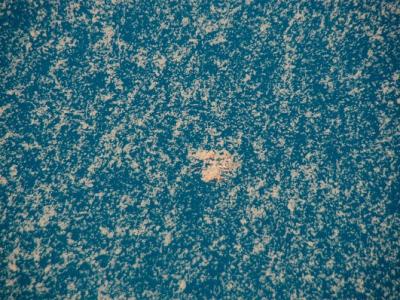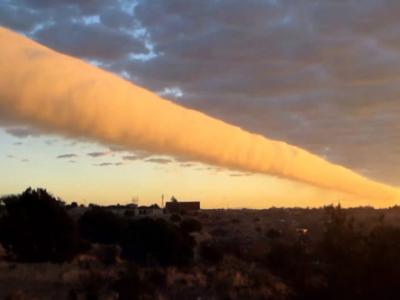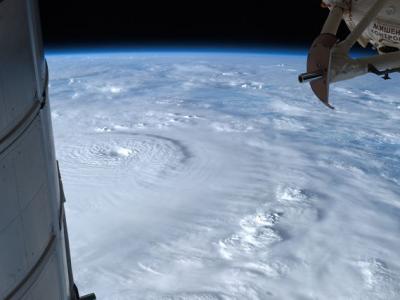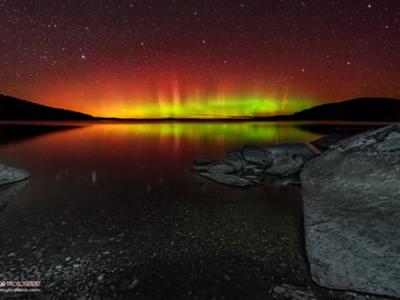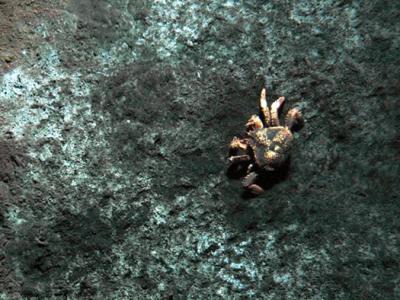Space Pictures This Week: Ice “Broccoli,” Solar Storm
Happy Trails
Amateur astronomer Alex Cherney captured these star trails as they blazed above Lake Tyrrell, a salt lake in Victoria, Australia in October 2011 and posted to The World At Night website December 25, 2012.
Tokyo From Space
The sprawling Japanese capital Tokyo looks like a funky computer chip in this image taken by Germany's Earth-observing satellite TerraSAR-X and released December 20.
Launched in 2007, the satellite's radar sensors map Earth from 319 miles (514 kilometers) up in a near-polar orbit.
Extreme View
NASA's Solar Dynamics Observatory snapped this extreme ultraviolet view of an active region on the sun as it rotated into view from December 16 to December 18. Ultraviolet light makes it easier to trace the whorls and loops created by superheated gas, or plasma, and the sun's magnetic field lines.
Active solar regions such as this create space weather that, when aimed at Earth, can disrupt satellite communications and electronics.
Saturn’s Dark Side
This image of the unlit side of Saturn's S rings, released December 24, was taken with visible light by NASA's Cassini spacecraft.
The shadow of Saturn's innermost major moon, Mimas, is visible as a black oval south of the rings' shadow. For those with completely dust-free computer monitors, Janus, another Saturnian moon, is visible as a tiny white speck above the planet's north pole.
A River Runs Through It
The European Space Agency released this picture—taken by Japan's satellite ALOS—of Italy's longest river on December 14.
The Po river and its surrounding fields divide Italy into its northern and southern regions. The Japanese used ALOS, which they lost contact with in late April 2011, to generate precise land maps, monitor disasters, and conduct resource surveys.
Glacial "Broccoli"
The Moshniy glacier, located on the Russian archipelago Novaya Zemlya in the Arctic Ocean, calves chunks of ice and debris into a pattern reminiscent of broccoli in an image released December 20.
Novaya Zemlya was a sensitive military area during the Cold War, and was also the site of the most powerful nuclear device ever detonated. The energy released by the 50-megaton "Tsar" bomb was ten times that of all the explosions set off during World War II.
